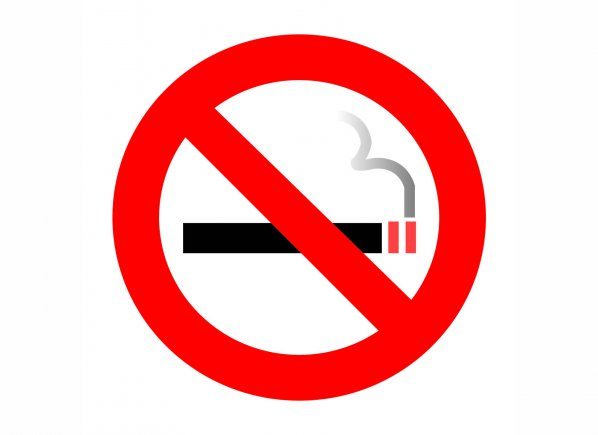Nearly one-third of active-duty service members smoke, and that figure increases among troops in a combat zone, according to the 2008 Department of Defense Survey of Health-Related Behaviors.
Most Soldiers know that smoking cigarettes can eventually cause lung cancer and emphysema, but one does not have to wait 20 or 30 years to experience the adverse effects of smoking.
Multiple studies by U.S. Army Public Health Command scientists show that smoking has immediate health effects, such as increased injury risk and diminished physical performance.
“Past studies of Army basic trainees show the risk of injuries among Soldiers who smoke was as much as 90 percent higher than nonsmokers,” said Michelle Chervak, senior epidemiologist at the USAPHC.
“From past data as well as analysis of recent data collected on operational units, we can definitely say that smokers have a greater risk of any injury, and more specifically, overuse injuries, [which is] damage to musculoskeletal tissue that accumulates with repetitive activities such as running,” she added. “Higher injury risk is likely due to factors that impair the body’s healing and repair processes.”
USAPHC studies have also demonstrated that smoking negatively impacts muscle endurance, especially as Soldiers get older.
“Our data show that smokers perform fewer push-ups and sit-ups on the Army Physical Fitness Test,” said Chervak.
Smoking can also affect mission readiness. USAPHC studies have also shown that Soldiers who use tobacco have reduced night vision and mental sharpness, and increased risk of heat and cold injuries. Nicotine decreases oxygenated blood flow, resulting in a 30 percent reduction in night vision for normal eyes, and 50 percent reduction in those wearing corrective lenses.
Likewise, smoking also causes reduced blood flow to the extremities, which leads to more heat and cold injuries as the body is unable to cool and warm them, especially fingers and toes.
MORE ADVERSE EFFECTS OF SMOKING
Not only does smoking have a negative effect on a Soldier’s performance, it also has poor health consequences for the smoker and those in his/her environment.
President Barack Obama’s National Prevention Strategy report states that cigarette smoking causes approximately 443,000 U.S. deaths each year. These deaths occur as a result of lung cancer, chronic bronchitis, strokes, heart attacks, emphysema and other conditions.
Second-hand smoke can also be damaging to others’ health — especially children.
“If Soldiers knew the effect that smoking has on their children, I think more would be encouraged to quit,” said Col. Heidi Warrington, chief nurse executive at the USAPHC.
Children who are exposed to second-hand smoke are at increased risk of suffering from chronic ear infections, asthma and learning disorders, said Warrington.
The financial costs of smoking are also significant. A recent Army Times article stated that tobacco use costs the Pentagon $846 million a year in medical care and lost productivity. Not to mention the cost to the smoker, with cigarettes currently ranging from $5 to $12 a pack.
BENEFITS OF TOBACCO CESSATION
More than 80 percent of adult cigarette smokers start before their 18th birthday, so a key tool to preventing tobacco addiction is to encourage smokers not to start, said Warrington.
For those who wish to reduce smoking, there is good news.
USAPHC studies show that the risk of a heart attack decreases 24 hours after stopping smoking and, after one tobacco-free year, the risk for heart disease is one-half that of smokers.
Because the nicotine in cigarettes is so addictive, quitting the habit is not easy. But those who wish to quit smoking should not be discouraged, said Warrington.
“Any reduction in tobacco use is considered a success,” said Warrington. “Soldiers who are having trouble quitting should focus on reducing the amount of cigarettes they smoke, with an ultimate goal of achieving a tobacco-free lifestyle.”
Many military medical treatment facilities offer tobacco cessation classes, and physicians can prescribe medications to help smokers kick the habit. Many communities across the United States also offer tobacco cessation assistance and counseling.











